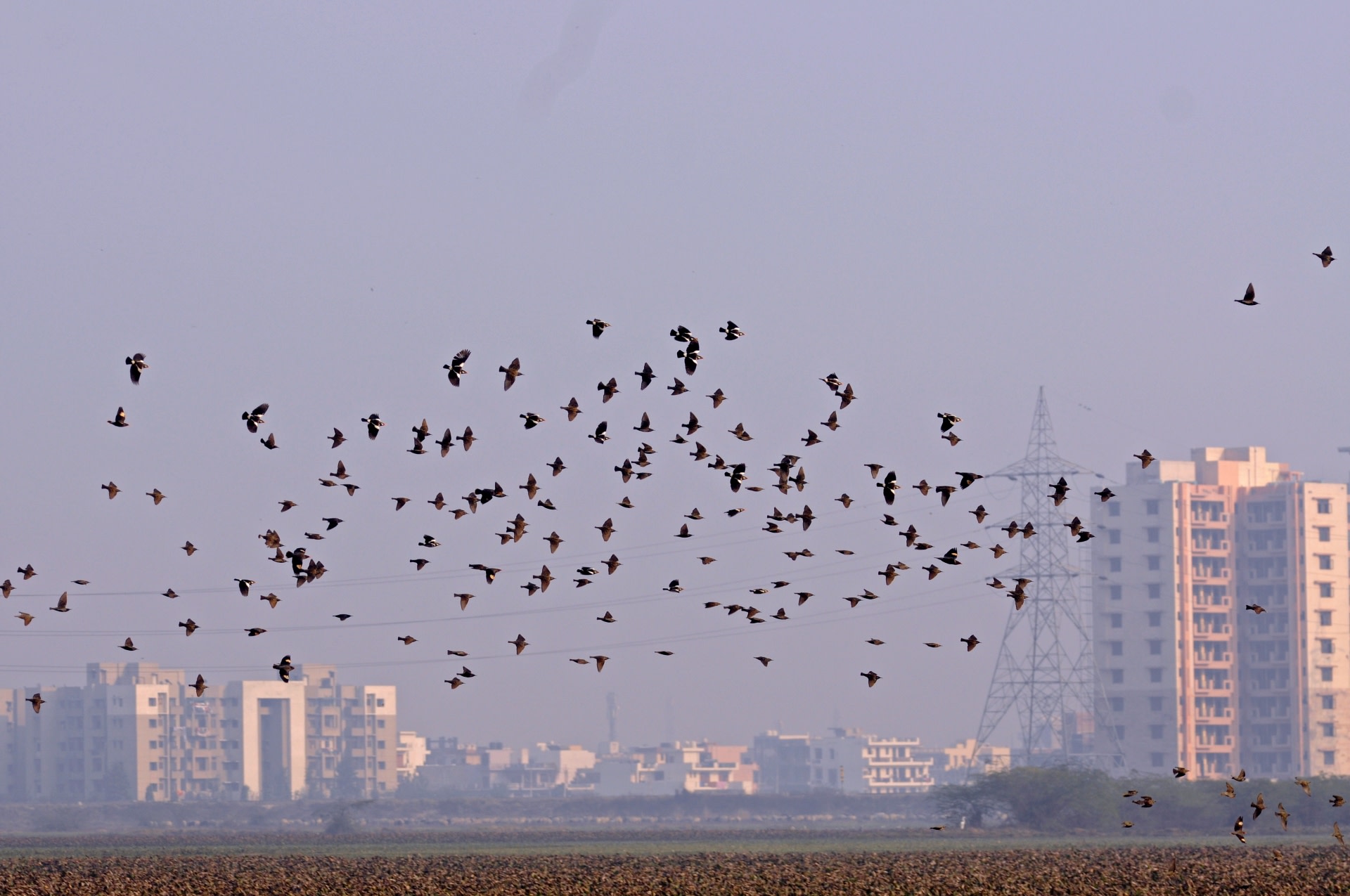 Listen to this article
•
15:34 min
Listen to this article
•
15:34 min
When I started birdwatching seven years ago, I was oblivious to the rich avifauna in Delhi NCR and completely ignorant of the existence of the Basai wetlands — one of the best birding sites in the area. Turns out, about 400 species have been documented in the Delhi NCR in the last few decades. Over 231 of these birds have been recorded in Basai as well. I hadn’t heard of the Basai wetlands until I became serious about birdwatching, and even then I was rather sceptical ahead of my first visit, given how close it is to the city. The trip proved to be a pleasant surprise. I saw over 90 bird species in a single day with over 50 lifers (‘Lifer’ in birding terminology means seeing a bird for the very first time). Far from disappointing, it was one of the most productive days of my early birdwatching forays. Some of the birds I saw in Basai included the shy and elusive water rail, the ruddy-breasted crake, and the moustached warbler, which migrates to these wetlands, and can be spotted from October to March every year.

The Basai Wetland in the National Capital Region plays host to a variety of migratory birds, which arrive between October and April. Cover Photo: TR Shankar Raman - CC BY-SA 3.0
Basai has now become my top birdwatching destination. This wetland, with its spread of typha reed beds and mustard fields, is home to an astonishing diversity of life. There are birds like warblers, weavers, and bitterns, and non-avian species such as jackal and nilgai. There is much to see here, especially in winter, when migratory populations fill the air with their chatter. The highest-flying geese in the world, the bar-headed geese, visit in droves during the colder months. So do short-distance flyers such the ashy prinia, and flocks of greater flamingos. Watching them is a wonderful way to spend the morning, one that resonates deeply with me and my fellow birdwatchers.

It’s not just the birds that need the wetland. Basai plays a crucial role in recharging the ground water of the Gurugram area, and any degradation would severely impact the ecosystem. But despite its obvious value, the Basai wetlands have not yet been declared a protected area by the Government of Haryana, and it is suffering for it.
In the last few years, significant portions of the reeds have been cleared by commercial fisherman trying to farm catfish, an invasive species that hampers the wetland ecosystem. Parts of the habitat have become a dumpyard for concrete and plastic waste, and there are now plans to build a waste plant for construction materials nearby. These activities, and the non-biodegradable waste they bring, are detrimental for the wildlife, but also for us humans.

Somehow, the birds continue to survive, despite environmental changes. Their population has fallen slightly every year, but they are still present in hopeful numbers. Other species however, aren’t faring as well.
Animals like the jackal and Indian hare have always lived an inconspicuous life, far from confrontation with humans. Without the mustard fields and other dense flora surrounding the wetlands, they are unable to move around without being noticed. This has led to a decline in their numbers in and around the region. Snake sightings too have reduced drastically.
Conservationists and birdwatchers continue to fight the authorities, but efforts are always in need of new supporters. Even those who aren’t birdwatchers can visit the Basai wetlands; it’s a truly unique ecosystem, and a reminder that we share our habitat — even cities — with a diversity of creatures that are crucial to our existence.








